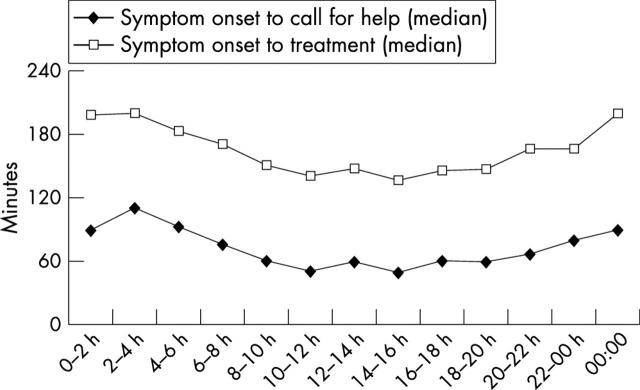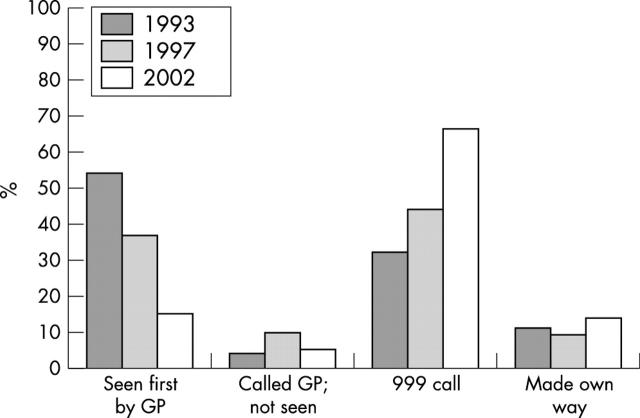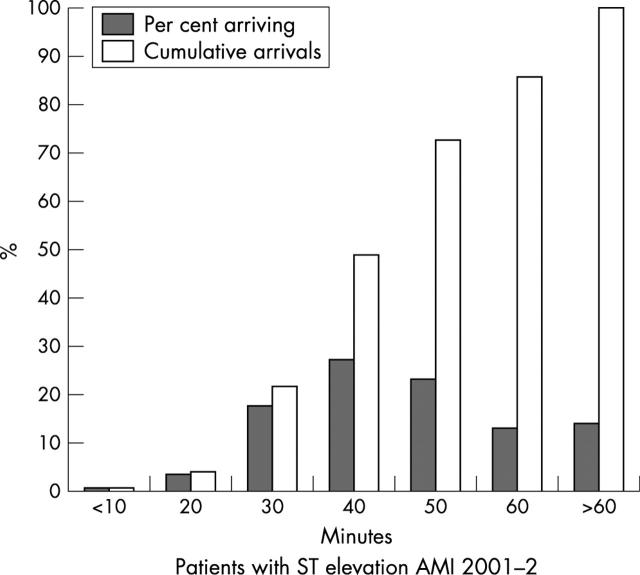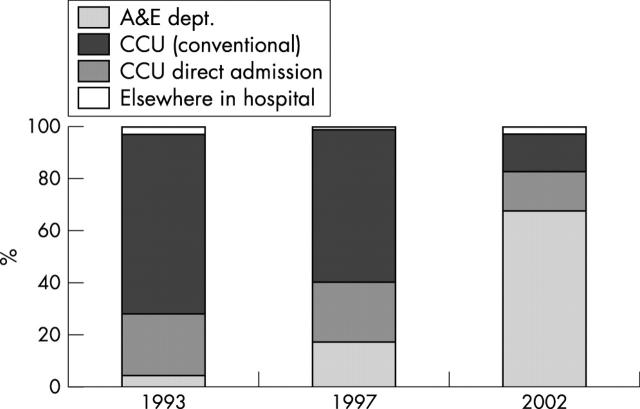Abstract
The Myocardial Infarction National Audit Project (MINAP) was developed primarily as a response by the profession to the audit requirements of the National Service Framework for coronary heart disease. MINAP began to collect data in October 2000 and by October 2002, 223 hospitals in England and Wales had returned data on patients with acute myocardial infarction. MINAP provides contemporary analyses of hospital performance, with the ability to compare local performance against the national aggregate. In the third quarter of 2002, 67% of patients received thrombolytic treatment within 30 minutes of hospital arrival. At the same time only 37% of patients received treatment within 60 minutes of calling for help, and only about 20% reached hospital within 30 minutes of calling for help. In order to improve speed of access to thrombolytic treatment there is a need for increased use of pre-hospital treatment.
Full Text
The Full Text of this article is available as a PDF (177.7 KB).
Figure 1 .
Impact of patient delay on time to treatment 2001–2.
Figure 2 .
How patients reach hospital 1993–2002.
Figure 3 .
Reaching hospital by ambulance: interval after a 999 call for help.
Figure 4 .
Increasing use of accident and emergency department for thrombolytic treatment.
Figure 5 .
Proportion of patients having thrombolytic treatment within 30 minutes of arrival at hospital.
Figure 6 .
Use of thrombolytic treatment: intervals after a call for help.
Figure 7 .
Use of thrombolytic treatment: intervals after onset of symptoms.
Selected References
These references are in PubMed. This may not be the complete list of references from this article.
- Birkhead J. S. Trends in the provision of thrombolytic treatment between 1993 and 1997. Myocardial Infarction Audit Group. Heart. 1999 Oct;82(4):438–442. doi: 10.1136/hrt.82.4.438. [DOI] [PMC free article] [PubMed] [Google Scholar]
- Boersma E., Maas A. C., Deckers J. W., Simoons M. L. Early thrombolytic treatment in acute myocardial infarction: reappraisal of the golden hour. Lancet. 1996 Sep 21;348(9030):771–775. doi: 10.1016/S0140-6736(96)02514-7. [DOI] [PubMed] [Google Scholar]









